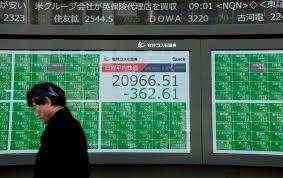

Reversal chart patterns form when a dominant trend is about to change course. The chart patterns signal that a prevailing trend’s momentum has faded, and the market is about to reverse. The most common reversal chart patterns include straight and reverse head and shoulders, double tops and double bottoms, falling and rising wedges, as well as triple tops and triple bottoms. Reversal chart patterns happen after extended trending periods and signal price exhaustion and loss of momentum. You can open a buy position when the price, having broken through the resistance levels of the formation, reaches or exceeds the local high, preceding the resistance breakout .
A stop loss is set at the level of the low of the entire formation +15%-20% . We introduce people to the world of trading currencies, both fiat and crypto, through our non-drowsy educational content and tools. We’re also a community of traders that support each other on our daily trading journey. To trade these patterns, simply place an order above or below the formation . For instance, if you see a double bottom, place a long order at the top of the formation’s neckline and go for a target that’s just as high as the distance from the bottoms to the neckline.
By fine tuning common and simple methods a trader can develop a complete trading plan using patterns that regularly occur, and can be easy spotted with a bit of practice. Head and shoulders, candlestick and Ichimokuforex patterns all provide visual clues on when to trade. While these methods could be complex, there are simple methods that take advantage of the most commonly traded elements of these respective patterns. It allows traders to place stop-loss orders and minimise potential losses. As an example, an asset’s price might be rising because demand is outstripping supply. However, the price will eventually reach the maximum that buyers are willing to pay, and demand will decrease at that price level.
Thus, the pattern is more advanced since timing the pullback at point 3 is not as easy and requires a multi-timeframe approach. Flags are among the most popular Forex chart patterns and they are exclusively trend-continuation patterns. This means that what can be considered a valid chart pattern, may play out in a manner that is not expected. It is, therefore, important that traders only take advantage of opportunities whose risk/reward ratios are compelling enough. The Cup and Handle chart pattern helps you quite accurately anticipate pullbacks and trade according to the main rule of technical analysis, “Trend is your friend, trade with the trend”.

The candlestick is called volume candle because it emerges when there are large trade volumes in the opposite directions in the market. Therefore, by the time of closing, the market hasn’t yet determined the new trend, as the demand and the supply are almost equal. However, the balance can’t last for a long time, and either buyer or seller finally wins, driving the price in the corresponding direction. You might enter a sell trade when the price goes out of the sideways trend after the major pattern works out . The target profit here should be put at the distance shorter than or equal to the spike’s height . A reasonable stop loss can be put a little higher than the local highs of the sideways trend, marked before and after the spike .
Price targets, when trading double tops and bottoms, are equal to the same height as the formation. They form in the shape of triangles, but they are very brief, with the resulting move duplicating the movement that preceded the formation of the pennant. In an uptrend, a bullish pennant will form when a small period of consolidation is followed by a strong desire by bulls to drive prices higher. It will be a signal that bulls are charged up for another strong push higher. You enter a sell trade when the last candlestick of the pattern is completed, and a new candlestick starts constructing .
chart patterns every trader needs to know
IG accepts no responsibility for any use that may be made of these comments and for any consequences that result. No representation or warranty is given as to the accuracy or completeness of this information. Consequently any person acting on it does so entirely at their own risk. Any research provided does not have regard to the specific investment objectives, financial situation and needs of any specific person who may receive it. It has not been prepared in accordance with legal requirements designed to promote the independence of investment research and as such is considered to be a marketing communication.

Until you close the trade indicated by that scheme, don’t look for other trading opportunities. If the tails of the adjacent candles don’t end at the same levels, but with a slight difference, you’d better not enter a trade, based on the pattern. The pattern is simply the inverse of the Head and Shoulders Top in the falling market with the neckline being a resistance level to watch for a breakout higher. The pattern is formed when the price reaches three consecutive highs, the tops, located at about the same level. Most often, the pattern emerges after a failed try to implement a double top pattern, and so, it is more likely to work out than the latter one. The pattern can be both straight and sloped; in the second case, you should carefully examine the bases of the tops, which must be parallel to the peaks.
When you are just getting started with the Head and Shoulders pattern I would recommend focusing on horizontal breakout patterns first. However, trendlines are more subjective and not as easy to trade. Thus, we can use these tools for finding corrective phases and for timing trade entries.
The reason levels of support and resistance appear is because of the balance between buyers and sellers – or demand and supply. When there are more buyers than sellers in a market , the price tends to rise. When there are more sellers than buyers , the price usually falls. And like a double bottom, the cup and handle is a bullish reversal pattern. The outcome of each chart pattern will vary depending on whether it appears in volatile or calm markets, and in bullish or bearish environments.
In the screenshot below, the price was initially in an uptrend and then moved into a sideways continuation. The price did break out which could have looked like a trend continuation at the time, but within just two candlesticks, the price traded back inside the pattern and below the resistance. In the screenshot below, the wedge forms during a mature downtrend, after the price has trended lower for a long period. Looking for reversal patterns in mature trends is the recommended approach since mature trends have a higher chance to reverse, compared to new trends that are just getting started. Double tops and double bottoms form after the price makes two peaks or valleys after a strong trending move. They signal price exhaustion and a desire by the market to reverse the current trend.
Flag Continuation
Even in strong uptrends and downtrends, you’ll see some movement against the prevailing momentum. Ascending and descending staircases are probably the most basic chart patterns. But they’re still important to know if you’re interested in identifying and trading trends. Around point 3, the price will often form chart patterns on the lower timeframes that can be used to time trade entries.

However, the longer is the timeframe, where you are looking for a scheme, the more likely is the way to work out. You open a buy position after the first candlestick, following the price gap, opens . Target profit is set at the distance that’s equal to or shorter than the gap itself; in other words you take the profit when the price rolls back to the previous close, preceding the gap . A stop loss can be put at the distance, equal to or longer than the gap in the direction, opposite to your entry . You can seldom come across the trend in classical technical analysis, as it was discovered as early as in the 1990s, and is hardly remembered nowadays.
You draw a hypothetical line that divides the channel into two equal parts and expect the movement that will rebound from this line, rather than break it through as a common wave. You open a buy position when the price breaks through the resistance line of the second channel and reaches the local high, preceding the breakout . Target profit may be taken when the price covers the distance equal to or shorter than the trend, prevailing before the first channel starts emerging .
If well understood, chart patterns have the potential of generating a steady stream of lucrative trading opportunities in any market, at any given time. At AvaTrade, you can use a demo account in order to learn how to recognise chart patterns, without putting any of your trading capital at risk. Continuation chart patterns form during an on-going trend and they signal that the dominant trend will continue.
The pattern mirrors the Double Top pattern, formed in the falling financial markets. The first is a direct Head and Shoulders pattern where the head is the head and shoulders top , it looks like a double top formation. There is also can be an inverse Head and Shoulders chart pattern that looks like a double bottom pattern, both are reversal chart patterns. This article deals with the price chart pattern concept and explains the most profitable chart patterns. I will describe the most popular Forex candlestick chart patterns, explain how to discover the candlestick formations in the chart and trade them.
A Must-ReadeBook for Traders
As the pattern progresses, it often coincides with a decline in volume. Ideally, you also want to look for a triple top within a strong uptrend only. As mentioned previously, the longer that a trend has been going on, the higher the chances of seeing a successful reversal if all other conditions are met too. The trend is currently pausing and struggling with the horizontal resistance level and the trend was not continued.
The 9 Forex chart patterns discussed in this article are both trend-following and also trend-reversal patterns. You can find the same chart patterns on the 1-minute, the 60-minute, the Daily, or even on the Weekly timeframe. In an uptrend, a flag pattern will form when prices consolidate by forming lower highs and lower lows to signal a period of profit-taking. A break outside the upper falling trendline will be a signal that bulls are ready to drive prices higher for the next phase. After such a bilateral chart pattern forms, the price can continue moving in either direction.
It is unlikely for a currency pair to move beyond the high price point and below the low price point after it does so twice on different occasions. In contrast, a descending triangle signifies a bearish continuation of a downtrend. Typically, a trader will enter a short position during a descending triangle – possibly with CFDs – in an attempt to profit from a falling market. The ascending triangle is a chart pattern that’s created when a horizontal set of highs is met by an ascending set of lows.